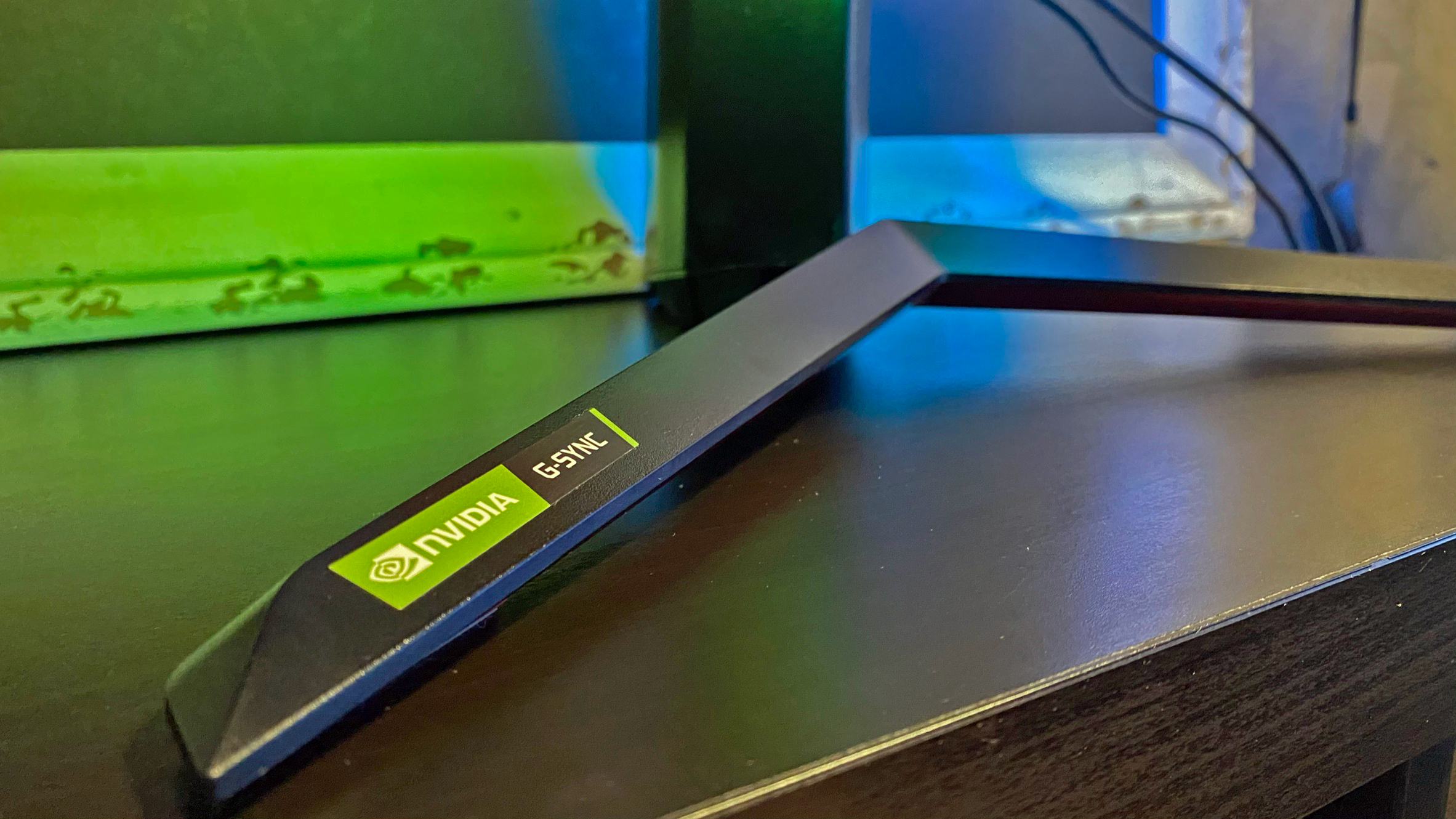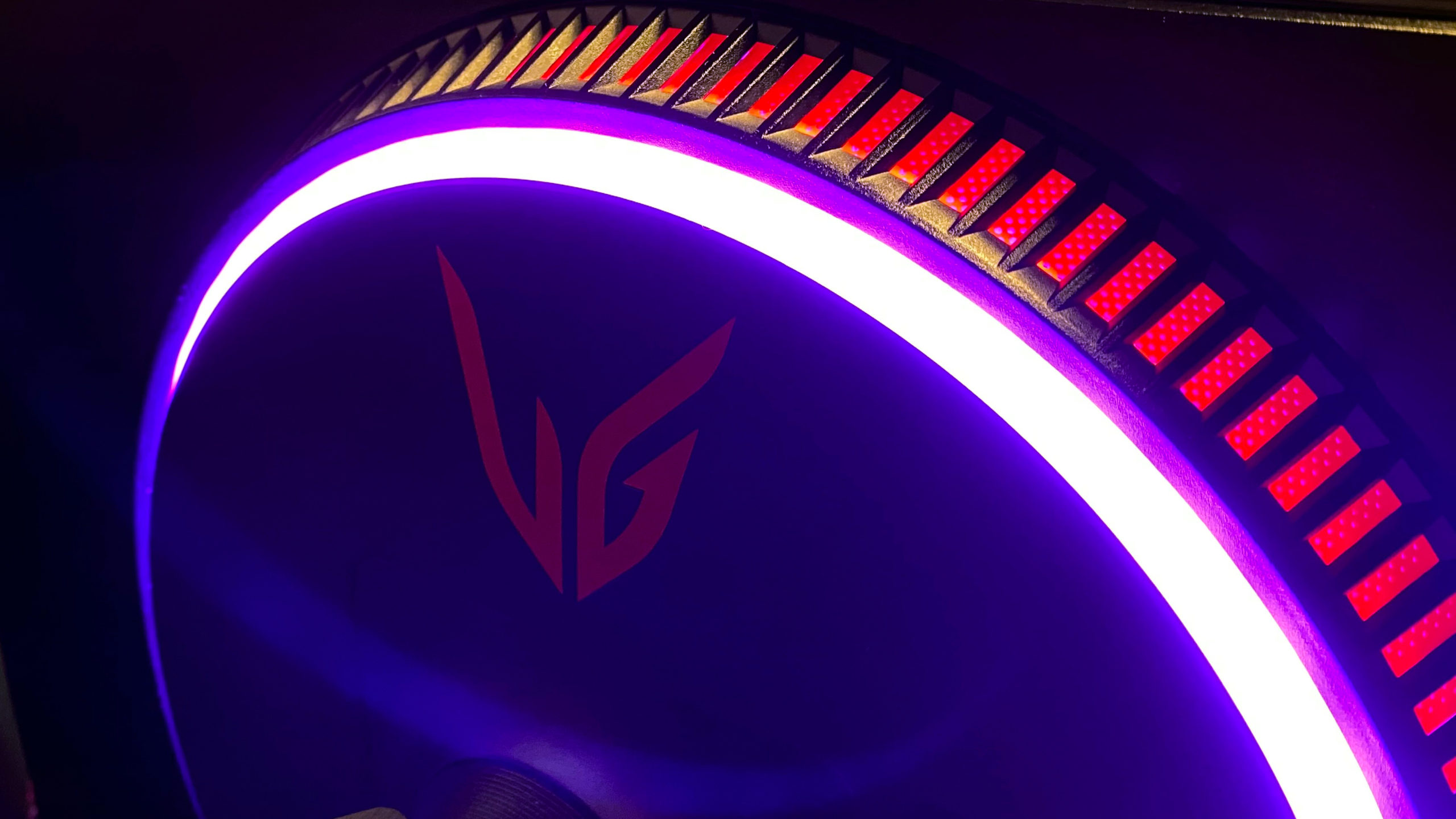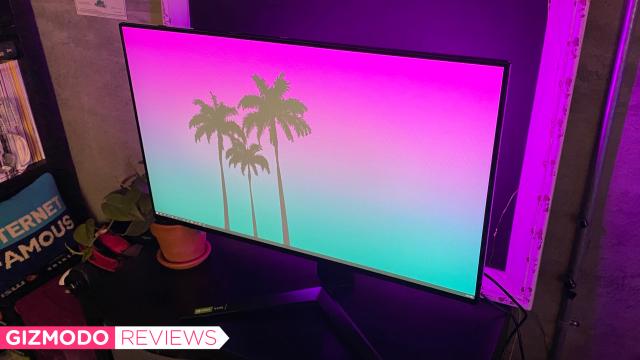It’s hard to call an $1,499 gaming monitor “reasonably” priced — even one that looks good and delivers on its promises of “overwhelming speed.” So let’s just say the LG UltraGear 27GN950 is less unreasonably priced than some of the competitors in its spec range.
But the relatively affordable price isn’t what makes the LG 27GN950 stand out. It’s the speed. With a 144Hz refresh rate (now overclockable to 160Hz thanks to a firmware update), LG’s Nano IPS technology (which, among other things, allows for a 1ms response time), and support for both Nvidia G-Sync and AMD FreeSync, this is the fastest and most responsive 4K monitor on the market. Or, at least, it will be until it’s supplanted by the LG UltraGear 27GP950 in April. So far, it seems like the 27GP950’s main upgrade will be support for HDMI 2.1, so if that’s crucial for you, then read no further.
But the LG UltraGear 27GN950 is very, very good.

LG UltraGear 27GN950 Gaming Monitor
What is it?
A 27-inch 4K UHD Nano IPS gaming monitor with a 144Hz refresh rate and a 1ms response time
Price
$1,499
Like
Speed! Fast and overclockable refresh rate and fast response time. Very pretty practically bezel-less design. Not insanely expensive.
Don't Like
Inconsistent backlighting and light leak issues; stand does not pivot and is weird looking and awkward, fully controlling and calibrating requires juggling a bunch of extra software plus the onscreen menu. No HDMI 2.1 but that's coming…very soon.
LG’s 27-inch 4K UHD display uses “Nano IPS,” which is the company’s improved IPS technology. A layer of nano-particles absorbs excess light, allowing for both a wider colour gamut and faster response times. IPS displays are known for their less-than-impressive input lag, and without additional technology such as Nano IPS or Samsung’s Quantum Dot, the speediest response time you can get on IPS is about 4ms. A 4ms response time is still pretty quick, and definitely fast enough for most gamers, but 1ms is even better.
Of course, this doesn’t mean that plugging this monitor into your PC guarantees a smooth, seamless, ultra-speedy 4K experience, especially not in every — or even most — situations. To take full advantage of this monitor, you’ll need a powerful graphics card as well as a DisplayPort 1.4 connection, not to mention 4K content. But the full, speedy, low-latency experience is definitely possible if you’ve got the right hardware and software.

The LG UltraGear 27GN950 does not support HDMI 2.1, which is a little wild considering this was launched in the second half of 2020. The Asus PG27UQ doesn’t support HDMI 2.1 either, but it’s two years old, so that’s more understandable. The LG 27GP950 will support HDMI 2.1, though, so that’s good news for console users. Both next-gen consoles feature HDMI 2.1; you can plug your peripherals in via HDMI 2.0, but your refresh rate will be limited to a measly 60Hz. It’s much easier (at least, for me) to justify spending hundreds on a big, pretty, lightning-fast display if I know it will work with multiple pieces of hardware.
And the LG 27GN950 is definitely big and petty. The display itself is beautiful, with an unmarked, ultra-thin bezel under an edge-to-edge screen with a silky-matte finish. And it’s bright — not as bright as the most premium displays, but it has a VESA DisplayHDR 600 certification, meaning it delivers at least 600 nits in HDR mode (it’s definitely more like 750 nits). It’s also got a slightly wider colour gamut thanks to the Nano IPS technology, and this is evident especially in HDR. As a display, the LG 27GN950 looks pretty good — but just pretty good.
While the LG 27GN950 does offer a decent contrast ratio in HDR (and very mediocre contrast ratio in SDR), it’s still just too bright overall. This seems to be due, in part, to the fact that the screen is edge-lit with selective local dimming instead of sporting the more precise (and pricier) full array local dimming. The 27GN950 has about 16 dimming zones, which is better than one, but is nowhere close to the 384 zones of a monitor with full array local dimming.

The other issue that seems to be affecting light leak is the LG 27GN950’s build quality. This monitor is big and sleek and it’s got plenty of premium touches that denote its flagship status, but it’s also ultimately constructed entirely of plastic. And not particularly sturdy plastic — one of the edges is definitely separating (and definitely contributing to the wonky backlight) on our review unit. This could be an issue with our review unit, especially because the unit is not brand new and was shipped around the world at least once, but it’s something to keep in mind. (Plus, it’s not just that edge that’s the problem.) The light leak and backlight inconsistency isn’t as egregious as I’m probably making it sound, but it is noticeable.
Design-wise, the LG27N950 has a sleek, minimalist display that looks very premium even when the edge is separating. There are no markings on the bezel, nor are there any buttons or power lights that can’t be turned off. It’s the perfect screen to blend seamlessly into an existing setup if you’re only looking at the monitor, alone, from the front.
But there’s more to this monitor than just a single, head-on view. For one thing, it comes with a stand, and while I love the monitor…I kind of hate this stand. The stand is definitely gamer-oriented: It’s black with red accents, and it consists of a large-ish sturdy column stabilised by two wide-set feet that are awkwardly attached to the front. There’s no branding on the bezel, but there’s plenty on the stand — on the column and on each awkward, blade-like foot. The stand has built-in cable management, which is simple but very easy to use. It also offers height adjustment (4.4. inches), tilt (5 to 15 degrees), and 90-degree swivel when you want to use the monitor in portrait mode. It does not, however, pivot at all. And this is even more of a hassle because the stand has such wide-set feet. It’s got a pretty big footprint, so I can definitely see this being a hassle. If it sounds a little like the Asus PG27UQ stand, that’s because it looks a little like that stand — but that stand pivots (and it also looks much more intentional and cohesive).

The back of the LG 27GN950 is the opposite of minimalist. It features UltraGear’s signature branding: a round backplate with red-accented venting, a stylised UltraGear logo, and a multi-coloured LED ring that you can control via a dial on bottom of the monitor. This dial lets you control the light ring’s basic functions: power, dimming, and six lighting options (four solid colours and two multi-coloured cycles, peaceful and dynamic). If you want to do even more, such as have the light sync with certain games or audio, you’ll need to download additional the LG UltraGear Control Centre software.
Next to the lighting control wheel, there’s a joystick for navigating the OSD. I love this button placement — there’s nothing more frustrating than trying to guess which buttons are which while angling my hand behind a monitor so as not to upset my multi-monitor setup. The joystick is intuitive and easy to use, and the OSD features five menus: Game Mode, Game Adjust, Picture Adjust, Input, and General. Game Mode has eight preset display modes that can be tweaked to some extent in the other menus; there are also plenty of options for additional calibration, though this monitor is well-calibrated out of the box. LG offers additional software, LG OnScreen and LG Calibration Studio (plus the lighting control software), for more control. I won’t lie, it’s a little frustrating to juggle three extra programs plus the OSD. At the very least, it’d be nice if those programs were consolidated into one.

The monitor’s ports are all located on the back panel; they’re not hidden or obstructed, and they’re oriented perpendicular to the display. In other words, very easy to access, although they’d be slightly easier to access if the stand had any amount of pivot. There are two HDMI 2.0 ports, one DisplayPort 1.4, three USB 2.0 ports (one upstream, two downstream), and a 3.5mm headphone jack. Headphone users might find it a little annoying that the jack is on the back instead of the bottom/side for convenient access, but since the monitor has no built-in speakers, the jack placement does make it easier to manage cables if you’re plugging in external speakers.
It’s disappointing, if not totally unexpected, that the LG 27GN950 does not support HDMI 2.1, and for that reason alone I’d suggest waiting until the LG 27GP950 comes out, because it will likely be similar in price. Even if you aren’t a console player and you don’t plan on becoming one, it just makes sense to wait and see what LG has in store with the next iteration. Because the LG 27GN950 isn’t even a year old, we may see a price drop when the 27GP950 comes out. Right now, it’s still full price.

The LG UltraGear 27GN950 has some issues, but it does a lot of things very well. It’s absolutely fast, and when you’re overclocked and using that DisplayPort 1.4 connection, the quicker refresh rate and how all the visuals come together is noticeable, even if it may not be absolutely necessary. The colours looked good, if a little washed out due to the backlight inconsistency at times, and the HDR delivers beyond what I expected. The backlight inconsistency might not bother you if you’re playing bright, visually flashy games, but for darker, more subtly-toned games it’s pretty noticeable.
4K gaming is an investment, and the LG 27GN950 balances its speed and quick response times with acceptable, if not perfect, visuals better than other monitors I’ve seen. But the 27GP950 is coming out in April, so I don’t think you need to jump on anything just yet.
README
- Very fast…!
- …Unless you’re a console player.
- Bezel-less design is on point.
- Wait and see if LG’s 27GP950 is a better fit (or if the 27GN950 goes on sale).
